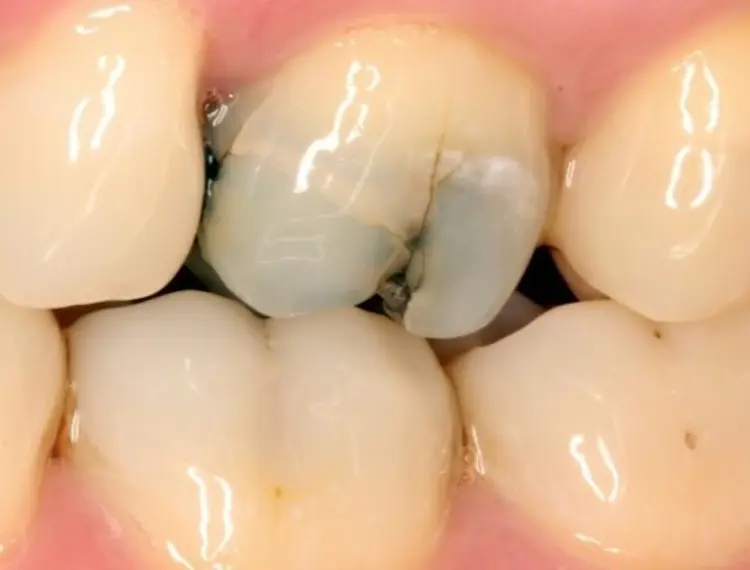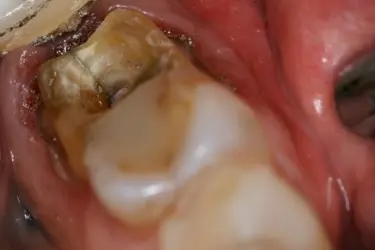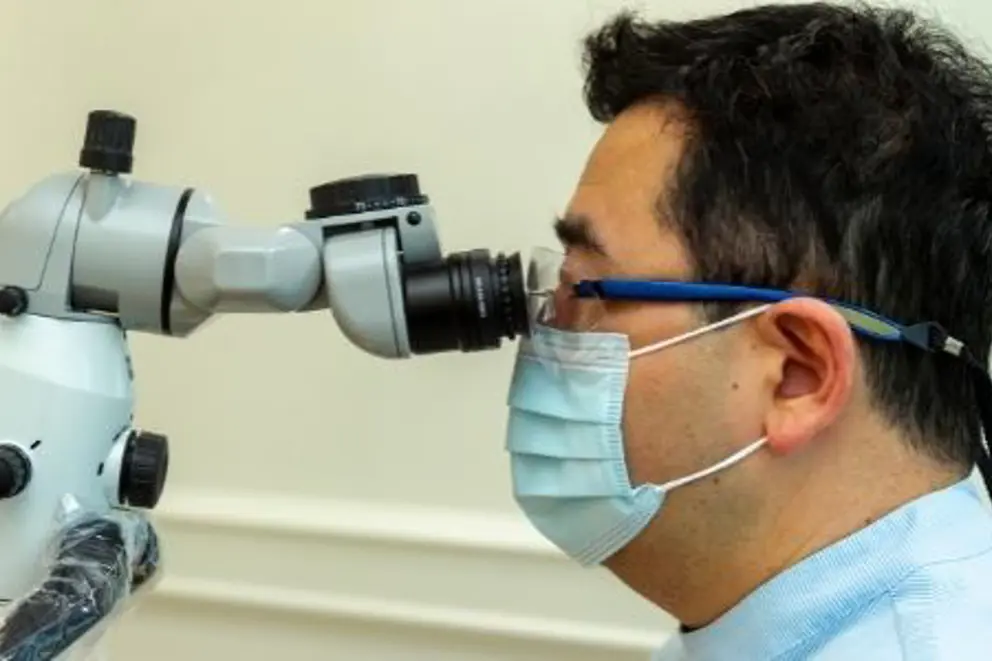
Cracks can develop in teeth. Not all cracks need to be treated; sometimes they can be left alone. Some cracks can get worse and cause pain or result in the cracked tooth needing to be removed. Your dentist will check your teeth for cracks. If your dentist finds any cracks, they will talk to you about them and recommend what to do.
Why do teeth get cracks?
Although tooth enamel is very strong, teeth flex when we use them. Tooth structure is flexible enough to take the force that is put on them when biting and chewing. Teeth are made to try and naturally stop cracks from developing. If a crack develops, the tooth will try to stop it from getting bigger. But as we get older, teeth get worn and can be made weaker by dental treatments such as fillings. These changes may increase the risk of cracks developing. Teeth also get less flexible as we get older.
Some conditions and lifestyle actions that may cause cracks in teeth include:
- teeth clenching and grinding
- opening bottles or packaging with teeth
- chewing ice cubes
- accidentally biting down hard items such as olive seeds,
- tooth erosion from acidic foods and drinks, medicines, vomiting, or reflux.
Cracks under fillings
Your dentist may find cracks under your old fillings. After the filling is removed from the tooth, they can see the cracks located under the filling and inside the tooth. Sometimes, cracks can cause other parts of the tooth to fall off when the filling is removed. This is more common with amalgam fillings. There are a few reasons that cracks develop under amalgam fillings.
- Amalgam fillings are made of metal. The metal expands and shrinks a little bit every time it is contacted by hot and cold temperatures. These changes put pressure on the tooth and may lead to cracks.
- Amalgam fillings do not stick to teeth like tooth-coloured fillings. The dentist cuts a cavity in the tooth that will hold the filling in place. More tooth needs to be removed for amalgam fillings. This may lead to some tooth structure around the filling getting weak over time.

A molar tooth with a crack thats starts at the top of the tooth and travels down the tooth's root.
My tooth looks cracked. Should I be worried?
Not all cracks are the same. Some teeth with cracks need treatment and some do not. Your dentist is trained to find and manage cracks in teeth. If a tooth has a crack and it is causing pain, this needs to be treated by a dentist. If your dentist finds a crack but it is not causing any trouble, they can give you advice on what should be done. This advice may be to just keep an eye on the crack.
Small cracks in tooth enamel may affect how your teeth look. If these cracks do not travel deep into the teeth, they may not need any treatment. But if you don’t like how your teeth look, you can talk to your dentist about what can be done to improve how they look.
Cracks that travel deep into the teeth may be more serious and may cause symptoms, including pain.
Possible symptoms of a cracked tooth
- Sharp pain on biting. The pain may go away once you stop biting. The pain may not happen every time you bite.
- Tooth is sensitive to cold or hot temperatures.
- A feeling that the teeth close together differently.
What will a dentist look at?
- Where the crack is in the tooth
- Which tooth has the crack and how much work that tooth does when biting and chewing
- The direction that the crack travels. Does it travel up and down or from one side to another?
- Any fillings that are already present in the tooth that has the crack
- The health of the nerve in the tooth that has the crack
- The health of the gums around the tooth that has the crack
- How all of the teeth bite together
- If you grind your teeth
- If you have had any cracks in your teeth before
How is a cracked tooth fixed?
The way to fix a cracked tooth is not black and white. Lots of factors need to be looked at to make a decision that will help the tooth.
The first step is often to cut the filling out of the tooth if one is present. Then look closely at the crack. Depending on what the dentist finds, there is different treatment options.
Sometimes the crack can be removed, and the tooth may only need to have a filling.
A common treatment for cracked teeth is to cover the tooth with a crown. This treatment works by placing a strong cover of over the top of the tooth. This holds the tooth together so that it does not hurt when you bite. It also tries to stop the crack getting worse.
Cracks that run vertically from the top of the tooth towards the gums may be harder to fix. If these cracks are severe, sometimes the only treatment is to remove the tooth.
The dentist will check if the nerve in the tooth with the crack is healthy. If the nerve is not healthy, the tooth may need a root canal treatment. If the dentist or root canal specialist doing the root canal treatment find that the cracks travels into the nerve in the middle of the tooth, they may say that the treatment is no longer possible. If they think the crack is too bad, they may say to take the tooth out instead. A dental microscope may be needed to help the dentist or specialist see the crack. After the root canal treatment is finished, it is common to need a crown to help protect the tooth.

An example of a dental microscope.
Sometimes a temporary treatment is done to see if the tooth’s symptoms go away. A temporary crown or metal band is placed around the tooth, holding it tightly. If the tooth has no symptoms after the temporary treatment, the dentist may suggest treating the tooth with a crown. The crown is a stronger treatment that can last longer. It helps to protect the tooth to stop more cracking int he future.
Your dentist will talk to you about the chances of the cracked tooth surviving in the future. It is different for every person and every tooth. Your dentist’s advice is a guide. Knowing how long the tooth will last may not be able to be predicted. If your tooth needs to be removed, your dentist can provide advice and treatment on how to replace it.


